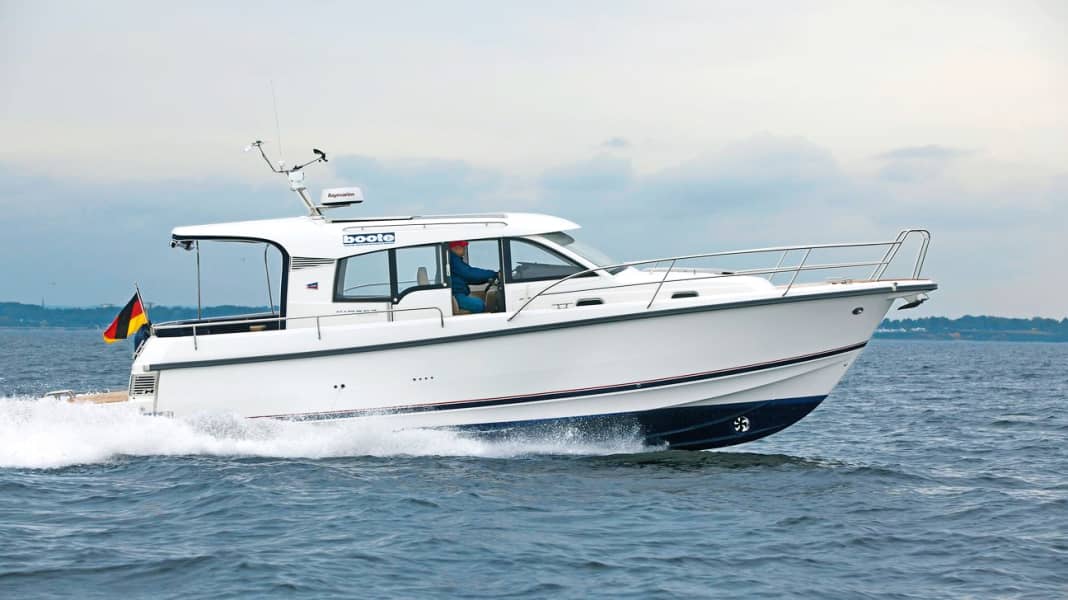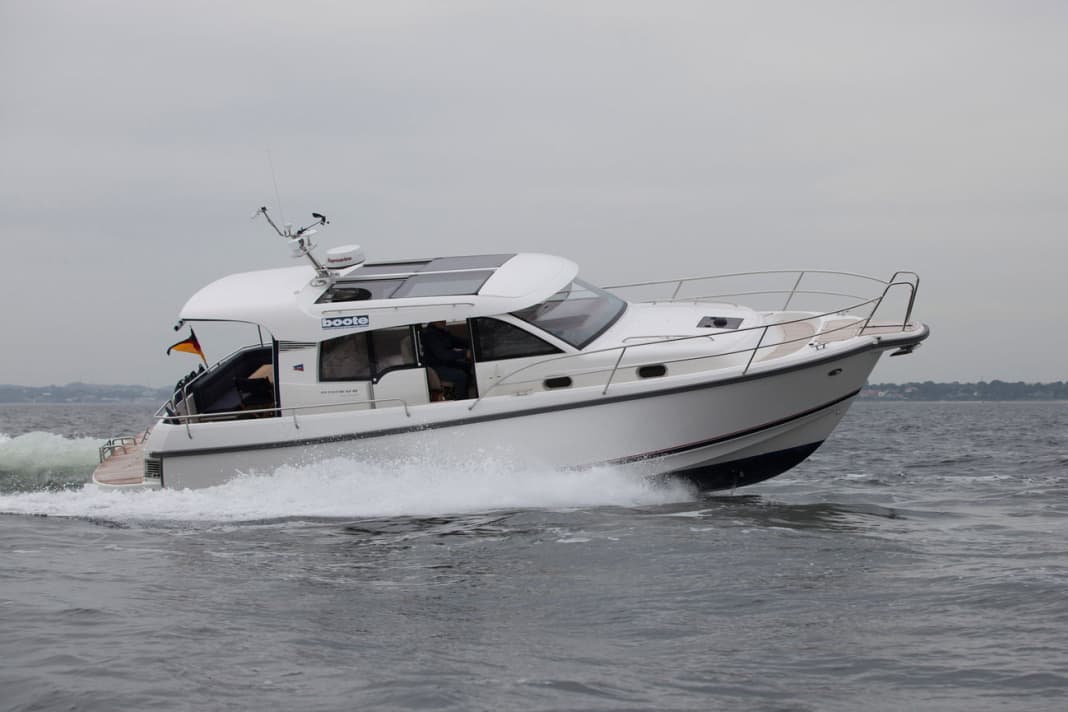
The same applies to boats as in the car industry:Manufacturers are usually not allowed to change successful models too much; on the other hand, customers naturally expect regular innovations. With the new edition of the Nimbus 365 Coupé, the shipyard has solved this as follows:
The typical coupé look is retained thanks to the current "side walk design", which is already featured on the Coupé 305 and 405. The sunroofs (double version) have been changed, which, together with the larger side windows, bring more daylight into the saloon






Further plus points:More storage space in the galley and cabins, more solid rubbing strake,Extended hardtop and enlarged ventilation ductsin the D-pillars and at the stern (for the engine compartment). The revised side door and the newly moulded pulpit offer more functionality and safety.
What is there to say about living on board? The Nimbus has four plus two berths. This means in detail: oneclassic double berth(1.70 x 2.03 m) in the forward cabin, a twin berth (1.40 x 2.27 m) in the underfloor cabin and a saloon seating area that can be converted into a berth measuring 1.12 x 2.09 m. The upholstery in the cabins is firm and well-ventilated. The firmness of the cushions is good and they are ventilated in the cabins.
The two "bedrooms" offer ample storage space and headroom of between 1.81 m and 1.83 m, with the height directly above the bunk in the centre cabin being a good 1 m. For the entire crew there is asuitably divided wet room which is accessible via a door from the hallway and the owner's cabin.
One small drawback: there is a small cupboard behind the toilet, which restricts back space
Cooking takes place in the lounge. Here is a Well-divided pantry blockwhich on our test boat was equipped with electric hobs and an oven/microwave combination unit (standard equipment: gas hob and oven). The designer has stored the fridge in a small cupboard under the well-padded driver's seat.
When seated, the skipper has a good view forwards and to the sides; aft, the corner pillars are partially in the field of vision due to the design. If you want to stand up, you have to open the sunroof and fold down a board in the footwell. Standing on this step, you can look through the hatch over the cabin roof and the wind blows around your nose.
The skipper can operate the rudder without restriction while standing or sitting, and the double single-lever control works easily and precisely. It drives two Volvo Penta diesels with 300 hp each - the maximum engine recommended by Nimbus. Single-engine variants are also available, which reduces the price by 26,000 euros, for example with the Volvo Penta D6-435, the boat's best-selling engine. Of course, the performance advantage speaks in favour of our twin-engine version, and if one engine fails, the second engine can still be used to reach the harbour.
With one engine, we aimed for a cruising speed of 7 knots at 1600 rpm, which gives us a range of around 400 nm plus 15% reserve
The same speed can be achieved with both engines when they are turning at 1000 rpm; then the consumption is 0.87 l/sm and the theoretical range is 685 nm. If, on the other hand, you want to make fast distance, you can let the engines turn between 2300 and 3000 rpm, because the consumption in this speed range is only slightly different; this in turn means that between a good 17 and 26 knots, just under 3 l/sm are injected through the injection nozzles and a range of 200 nm is possible for the boat category. Routes such as the one from Neustadt in Holstein to Bornholm can therefore be planned without hesitation.
The choppy water at around force 3 winds on the Baltic Sea plus the stern sea of the coastguard keeps the Nimbus on course and dry at around 25 knots. In fast bends, the hull does not lean excessively on its side and moves in fairly large circles without any problems. To reduce these a little more, the throttle lever of the inboard engine is pulled back. Back in the Ancora Marina, thanks to the two engines and the bow and stern thruster (extra), we dock with pinpoint accuracy.
This can also be done easily from the side deck by operating the installed "Yacht Controller" by remote control
The two engines can be accessed both via a hatch in the cockpit floor and through additional openings in the forecastle boxes. Operational safety is ensured by diesel filters, although these are not equipped with an alarm. Crimped fuel line connections are just as much an indication of properly executed installations as the neatly fastened and bundled lines.
The safety equipment includes the fire extinguishing system in the engine compartment as well as an electric and a manual bilge pump. Non-slip floor structures with a bar deck and a large number of handles and handrails ensure safe movement.
This test appeared in BOOTE issue 10/2017


